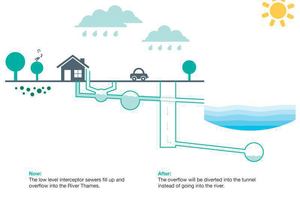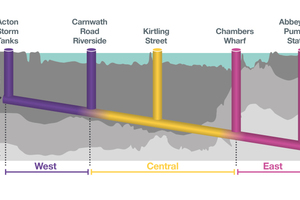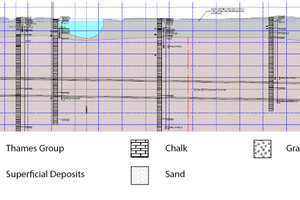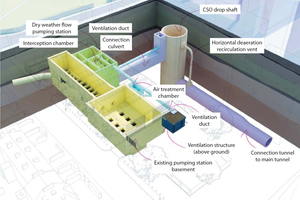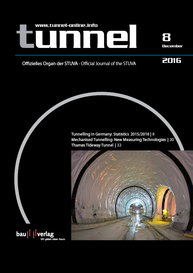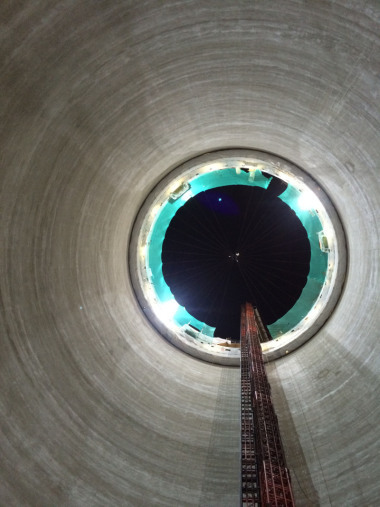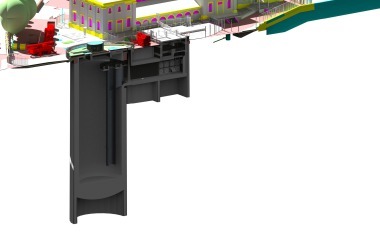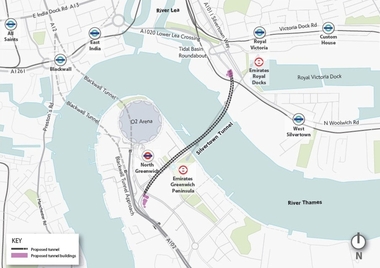Thames Tideway Tunnel:Upgrade for London’sWastewater System
London’s water and wastewater system provider, Thames Water, is improving its water quality through a three-stage upgrade. After redeveloping its clarification plants and opening the Lee Tunnel, a combined facility for storage and the conveyance of sewage mixed with rainwater in the east of the city, now the Thames Tideway Tunnel is being tackled. It is the biggest project, entailing investments of ca. 4.2 billion pounds sterling. As from 2023, it is intended to carry sewage from 34 of London’s largest combined sewer overflows over a length of 25 km, store and transfer it to Lee Tunnel. This article describes the main construction measures and special features of the Thames Tideway Tunnel, particularly the West Section.
The Sewage System
from the 19th Century until Today
Until the mid-19th century, London’s growing volume of sewage ran off conspicuously along the streets prior to draining into the River Thames. At the time, the River Thames was nothing more than a dead river transporting raw sewage. This significant health risk resulted in many deaths due to cholera outbreaks. In 1858, “The Great Stink of London” found its way into the history books. Only when the members of parliament had to interrupt their work at Westminster that year, was it actually decided to go ahead with the design and implementation...



